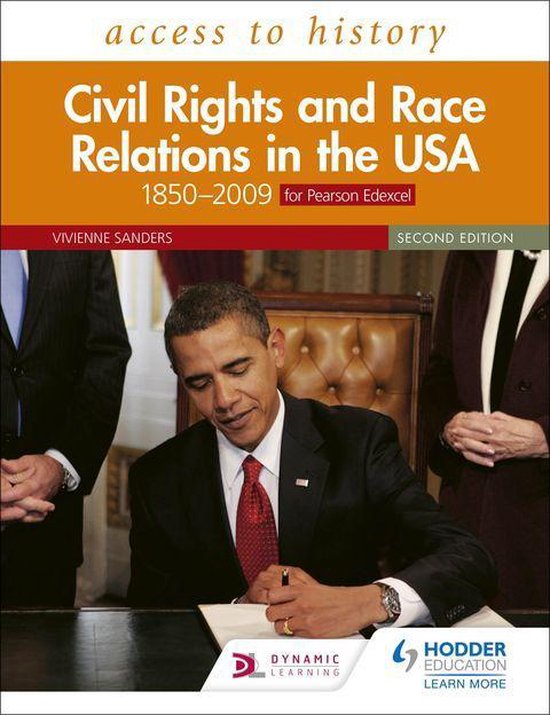Case Study Key Features Significant Not Significant
Brown v. - A Kansas schoolgirl, Linda Brown had to walk 20 blocks to get to her all-black school - Overturned Plessy v. Ferguson - The Supreme Court gave no date by wh
Board of - Her father decided to challenge the segregated school system - Seemed to remove all constitutional sanctions for be achieved
Education, - Brought to the Supreme Court by the NAACP racial segregation - The Supreme Court said nothing about
- Black lawyer, Thurgood Marshall argued that ‘separate but equal’ education facilities in public - The NAACP returned to the Supreme Court and - In the Deep South, schools remained se
Topeka schools was a breach of the 14th Amendment obtained the Brown II ruling that integration be - Some school boards maintained white-
1954 - Supreme Court ruled that even if facilities were equal, separate education was psychologically accomplished ‘with all deliberate speed’ manipulating entry criteria
harmful to black children - 70% of school districts in Washington DC, and many - Some schools in Virginia closed rather t
border states, desegregated schools within a year - White Citizens’ Councils were formed th
- Inspired further activism for legal equality defend segregation (250,000 members b
- Demonstrated the power of activists - The KKK was revitalised
The Murder of - Emmett Till was a 14-year-old black American from Chicago - Till had an open casket = the sight of his brutalised - Murderers acquitted
Emmett Till - While he was visiting family in Mississippi, he was accused of whistling at a white woman body pushed many to fight for civil rights
1955 - 2 white men mutilated and murdered Till - Press coverage
- His murderers, Bryant and Milam, were acquitted by an all-white jury - Widespread shock and condemnation of the
- Protected by double jeopardy, the two men later admitted that they kidnapped and killed Till Southern States
- Encouraged many black Americans to become civil
rights activists
- Catalyst for the Civil Rights Movement
The - In 1955, Rosa Parks caught the bus home after a day of work as a seamstress in a department store - Demonstrated the power of a whole black - Montgomery’s White Citizens’ Council o
Montgomery in Montgomery, Alabama community using non-violent action the bus boycott
Bus Boycott -The bus filled up and a white man was left standing - Black shoppers could not get downtown without the - The Council ordered the harassment of
1956 - The driver ordered 4 black passengers to move and Parks refused buses so businesses lost $1 million and white - E.g. Black churches and homes were bo
- She was arrested and charged with a violation of the Montgomery city bus segregation ordinance businessmen began to work against segregation = - In Montgomery, the buses were desegr
that forbade black passengers sitting parallel with whites economic power of black Americans was
- Parks was an NAACP activist - In Montgomery, buses were desegregated (Browder
- The Montgomery Branch had been looking to challenge the city’s bus segregation laws and decided v. Gayle)
to use Parks as a test case - Boosted black morale
- After Parks’ arrest, the NAACP and the black teachers and students of Alabama State College - It inspired similar successful bus boycotts in 20
organised a day-long bus boycott in protest southern cities
- Montgomery’s black community successfully boycotted buses on the day of Rosa Parks’ trial, - Brought MLK to the forefront of the movement
demanding ‘first-come, first-served’, courteous drivers and the employment of black drivers - Led to the creation of the SCLC
- When the city commissioners rejected these demands, the boycott became a year-long one and the
aim became the integration of the buses
Little Rock - Little Rock planned full compliance with Brown by 1963 and began with the integration of Central - Confirmed the belief of black Americans that they - Demonstrated how Brown v. Board of e
1957 High School couldn’t rely upon court decisions but needed to do resistance in practice
- 9 black students reported there in September 1957 more direct, non-violent action - It was 1960 before Central High School
- The Arkansas governor and local white groups opposed the enrolment of black students and a riot - Demonstrated the increased importance of the
nearly occurred media to black progress
- Eisenhower sent in troops to protect the black children - Cities like Atlanta desegregated to avoid Little Rock-
style violence and publicity
- Federal government intervention





